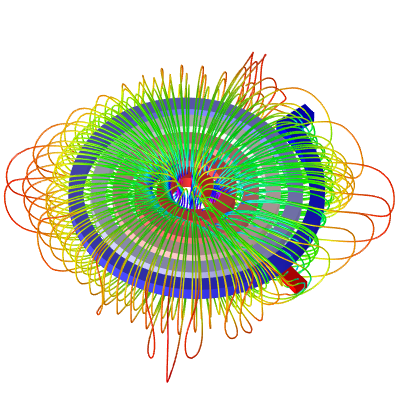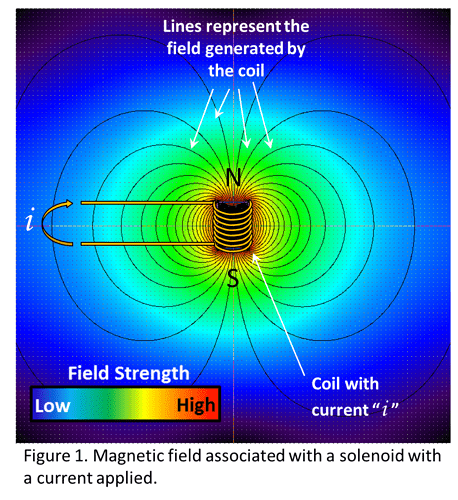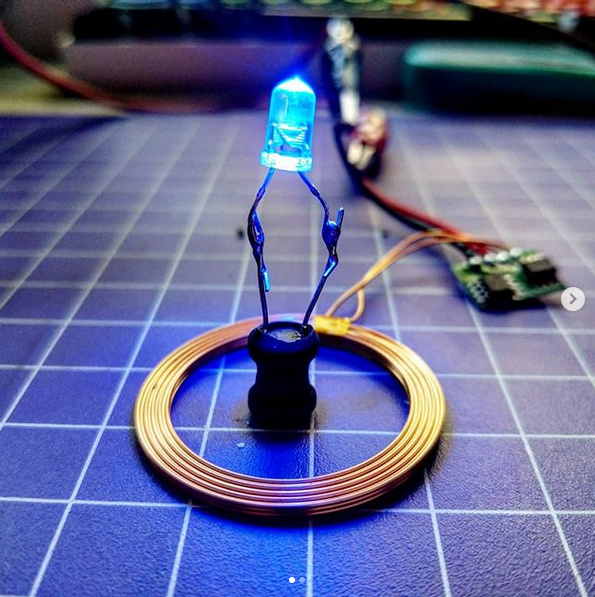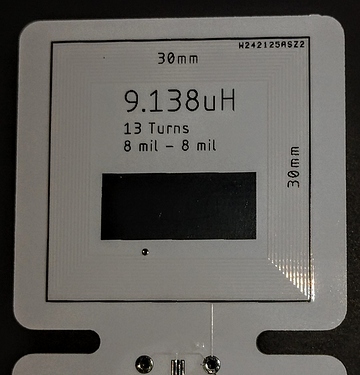Resonance can be demonstrated in water.
We have a swimming pool filled with water. The water is perfectly still and the top looks like glass. (no wind, for arguments sake, we are in a vacuum)
Now consider a small toy boat floating on the water.
The water is still, the boat does not move. It just floats on the water.
The water level of the pool is like DC voltage. You can add more water to the pool, and all that does is lift the boat to the level of the water and then the boat stops moving. There’s nothing to excite the boat.
Consider this video https://www.youtube.com/watch?v=BVwmuHunc9M
He is exciting the water with a frequency… The frequency that he is jumping up and down create waves These waves are analogous to the frequency you need to input into your coil to excite it. Adding DC to a coil doesn’t do anything to excite the coil it just “raises the water level”
Now he’s having an issue in the pool and that is there are two resonance frequencies in that particular pool. But I’ll get back to that in a minute.
The resonance frequency can be described as the frequency that creates “standing” waves. This means if you excite the material, that the wave generated through the material will bounce back in phase with the source thus adding the two waves together.
Ever take a rope and give it one good shake and watch the “wave” travel down the rope, hit the end and bounce back? The same thing happens in water. The guy jumps, and a wave travels away from him, it hits the edge of the pool and bounced back. Now If when it bounced back and he is at the top of his “input” jump just as the peak of the reflected wave arrives to him, the reflected wave and the input wave are added and he is in resonance.
Consider what would happen if he is at the bottom of his “input” jump just as the peak of the reflected wave arrives to him. What happens is they are added, but his input is negative and the reflected wave is positive and they cancel out. Instead of a resonating, he has now created a filter that blocks that frequency.
Back to the problem in the pool. Remember it takes time for the input wave to travel, hit the edge of the pool and bounce back. His pool is a rectangle and he’s not in the center, so the waves will bounce back from the 4 walls, all at different distances and will reach him at different times. So it is very unlikely (though not impossible) that waves reflecting from the sides will return at exactly the same time as the reflections from the ends of the pool. So you get what you see in the video. Chaos.
Now consider this video: https://www.youtube.com/watch?v=cZUsDgBdouM
He is in the center of a round pool, so the input wave reflections will bounce back from any direction and meet in the middle at the same time, but he still needs to provide an input at the resonant frequency to excite the pool… And he does. You can see his input is in phase with the reflected wave and he gets the water to act in a very predictable and uniform manner, resulting in a wave with an amplitude far greater than his input.
So getting back to the issue at hand, you need a pool (coil) where if you input 13.56 mHz (guy jumping up and down) that the waves reflected back are in phase with the input. This depends on the size of the pool… i.e. time it takes for the wave (electricity) to travel through the capacitor and coil. Electrically, That time is dictated by the values of the capacitor and coil.





